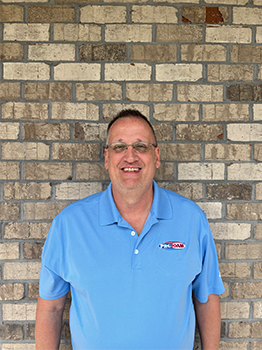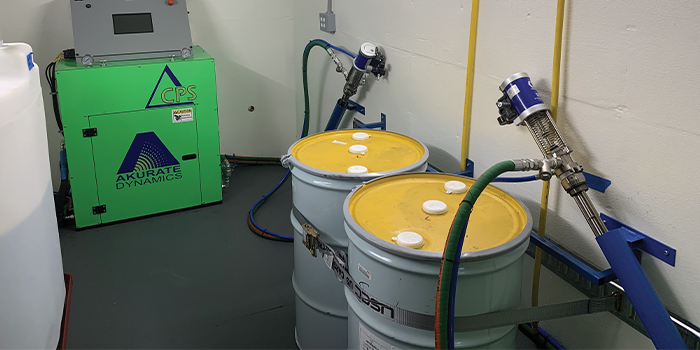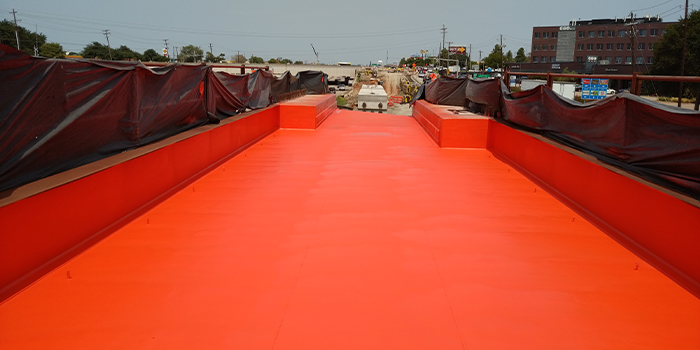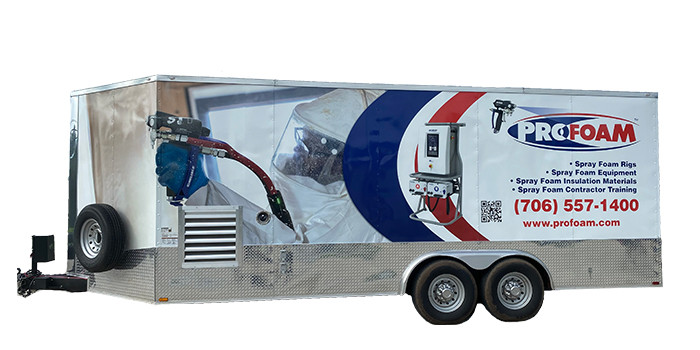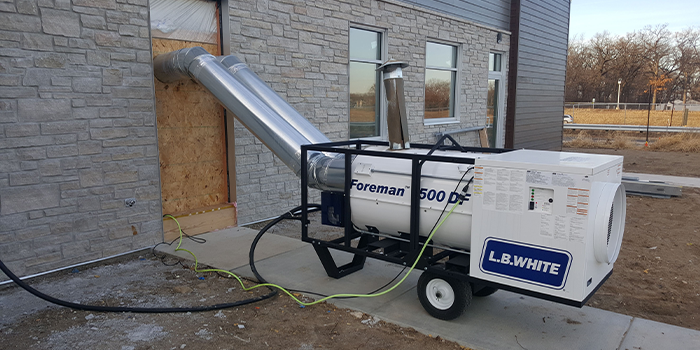
Indirect Heaters

Spray Foam Magazine – Spray foamers, here is a quick tech tip for you! Spray foam likes heat, but I’m not talking about air temperature. The temperature of the substrate is what’s important. The warmer the substrate, the better the adhesion, the better the yield, especially in the colder weather.
One of the best things you can do while you are spraying is follow the sun. What I’m talking about is using the sun to your advantage. Spray the sunny side of the building first. When the sun is shining, the substrate on the sunny side can be as much as 40 degrees warmer. By spraying that first, you’ll get better yields, and be able to hold more heat in the building for spraying the sides of the building that won’t get direct sunlight. So, what do you do if the sun isn’t warming the building? Perhaps it’s cloudy, or the building is just in an area that won’t get any sun. It may be worth considering an “indirect heater.” An indirect heater is designed to sit outside the building and uses a duct to blow the heat into the building, while keeping the moisture, that is produced by combustion, outside of the building so that it doesn’t have a negative impact on your foam. Another benefit of indirect heaters is that the air coming from the heater is clean, dry air from outside, so it acts like ventilation and reduces the concentration of airborne contamination from spraying the foam, making it a safer environment to work in. You can also add the optional thermostat to the heater that stays inside the building to control the heater so that it can be left unattended. This makes it perfect for setting up the night before starting the job so that the structure is warmed up and ready to go. Unlike direct heaters (torpedo heaters), indirect heaters do not need to be shut off while you are spraying.
Happy spraying, and keep in mind, indirect can sometimes solve a direct issue!
ABOUT THE AUTHOR
Ken Anderson
is currently the Technical Director for Profoam. After a career in engineering, Ken started a successful spray foam contracting business. Eight years later he transitioned to tech service, helping other contractors be successful in their businesses. Ken has been with foam distributors and foam manufactures gaining experience along the way and has been with Profoam for the last 3 years.
For use by SprayFoamMagazine.com & Spray Foam Magazine
